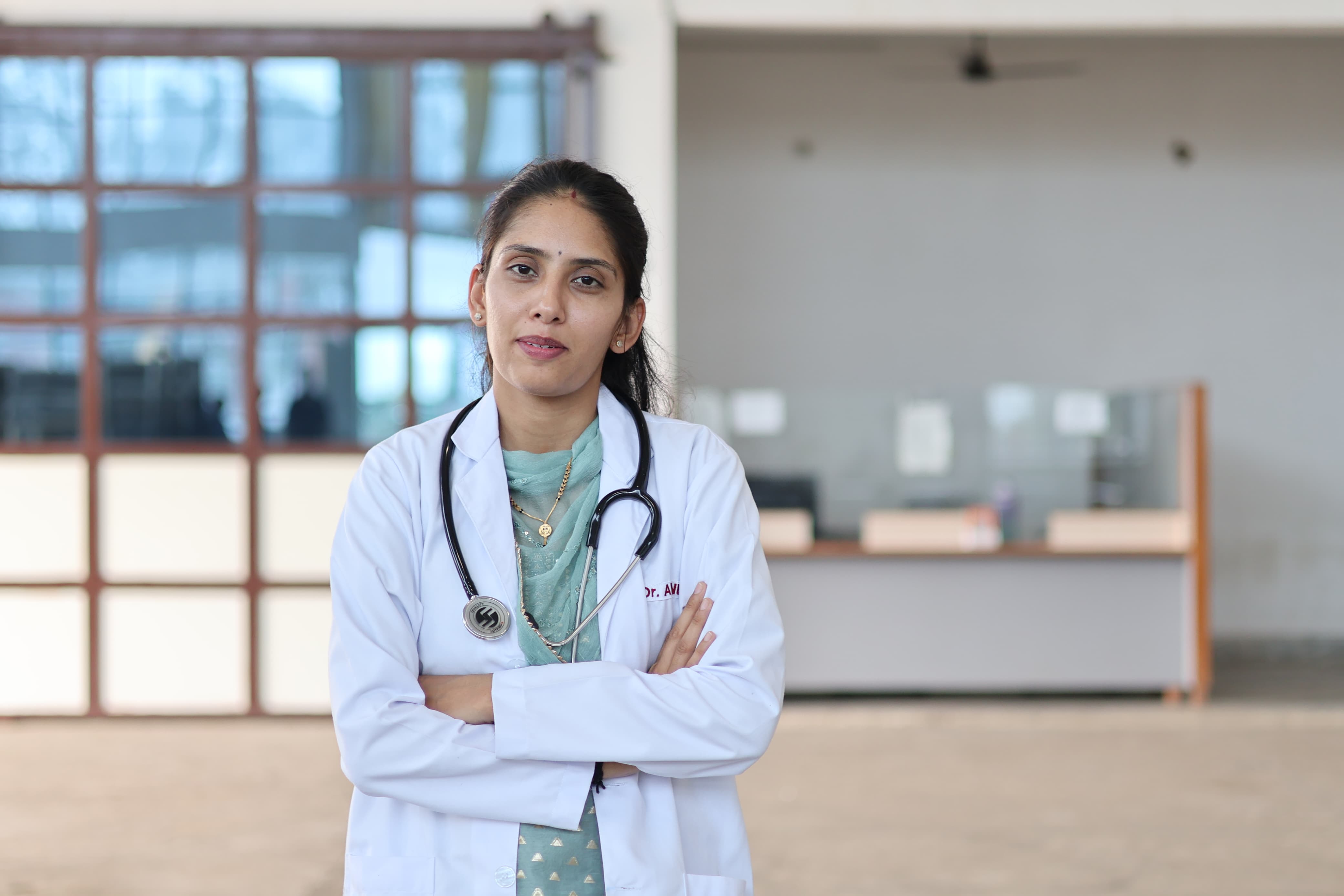The National Eligibility cum Entrance Test (NEET) offers a wide variety of medical and allied health sciences courses. While MBBS (Bachelor of Medicine, Bachelor of Surgery) is often the default aspiration for many, another honorable and equally influential path awaits those with a deep love for animals and a desire for varied, hands-on challenges: BVSc&AH (Bachelor of Veterinary Science and Animal Husbandry).
Deciding between these two demanding yet rewarding professions requires careful consideration of your interests, strengths, career aspirations, and the unique challenges and opportunities each presents. Let's explore into a comprehensive comparison to help you make an informed choice, with a sharp focus on the diverse nature of a veterinary career.

1. Understanding the Core Disciplines
MBBS: The Healer of Humans
MBBS is a rigorous undergraduate program focused on human health. It involves in-depth study of human anatomy, physiology, pharmacology, pathology, microbiology, and clinical subjects like medicine, surgery, pediatrics, obstetrics & gynecology, and various specialties. The goal is to diagnose, treat, and prevent human diseases. While crucial, the focus remains primarily on a single species.
BVSc&AH: The Guardian of Animal Well-being and Public Health
BVSc&AH is a professional degree that deals with the health and welfare of a vast array of animal species. It encompasses veterinary anatomy, physiology, pharmacology, pathology, microbiology, animal nutrition, genetics and breeding, livestock production, veterinary surgery, medicine, and public health. Veterinarians play a crucial and often understated role not only in treating sick animals but also in preventing zoonotic diseases (those transferable from animals to humans), ensuring food safety from farm to fork, and contributing significantly to the economy through livestock health. This field offers a broader perspective, impacting both animal and human populations.
2. Nature of Work and Skills Required
For MBBS Graduates:
- Patient Interaction: Primarily with human patients and their families. Requires strong communication, empathy, and counseling skills. The emotional landscape is often centered around human distress.
- Diagnostic Acumen: Interpreting symptoms, medical history, lab results, and imaging to arrive at a diagnosis. While complex, patients can verbally communicate their issues.
- Procedural Skills: Performing physical examinations, minor and major surgeries, administering medication, and various medical procedures.
- Emotional Resilience: Dealing with human suffering, ethical dilemmas, and high-pressure situations.
- Continuous Learning: Medicine is constantly evolving, demanding lifelong learning and adaptation.
For BVSc&AH Graduates:
- Diverse Patient Interaction: Engaging with animals of incredibly varied species (livestock, pets, wildlife, aquatic animals) and their owners. This demands keen observation, the ability to interpret non-verbal animal behavior, and strong communication with often anxious owners, sometimes acting as interpreters for their non-verbal patients.
- Unique Diagnostic Challenges: Animals cannot verbally express their symptoms, requiring veterinarians to rely heavily on meticulous physical examination, owner's often anecdotal observations, and advanced diagnostic tests. This hones superior deductive reasoning skills.
- Highly Versatile Skills: Performing surgery on anything from a tiny bird to a large horse, administering medication, vaccinations, implementing complex animal husbandry practices, and often dealing with large, potentially uncooperative animals that require a blend of scientific knowledge and practical handling skills.
- Broader Public Health Role: Veterinarians are on the front lines of public health, directly involved in food safety inspection, disease surveillance, and controlling zoonoses. Their work directly protects human populations from diseases originating in animals, making them essential public health guardians.
- Exceptional Adaptability: Working in vastly diverse environments – modern pet clinics, sprawling farms, cutting-edge laboratories, renowned zoos, and challenging field conditions. No two days are truly alike.
3. Career Opportunities and Scope
MBBS: A Vast and Diverse Landscape
- Clinical Practice: Working in hospitals (government/private), clinics, or setting up private practices. This is the most common path.
- Specialization: Pursuing MD/MS (postgraduate degrees) in various fields like Cardiology, Oncology, Pediatrics, Orthopedics, Dermatology, Psychiatry, etc. This is where most doctors find their niche, often leading to very specific practice areas.
- Research: Opportunities in medical research institutions, pharmaceutical companies, and public health organizations.
- Academics: Teaching in medical colleges.
- Public Health: Working with government health departments, NGOs, and international health organizations, though often with a human-centric focus.
- Medical Administration: Managing hospitals and healthcare systems.
BVSc&AH: A Niche with Exploding Horizons and Direct Impact
The veterinary field, while often underestimated, offers a remarkably diverse and expanding set of career avenues, driven by global trends in pet ownership, food security, and disease prevention.
- Clinical Practice (The Heart of Veterinary Medicine):
- Thriving Pet/Companion Animal Practice: The rapidly growing pet industry has led to a high demand for skilled vets specializing in dogs, cats, and exotic pets in state-of-the-art private clinics. This sector is experiencing significant growth and offers emotionally rewarding work.
- Essential Livestock/Farm Animal Practice: Working with cattle, sheep, goats, poultry, pigs in rural or farm settings. This is crucial for the agricultural economy and food supply, offering a vital role in national development.
- Specialized Equine Practice: Focusing on horses, from racehorses to companion animals.
- Critical Wildlife Veterinary Medicine: Working in zoos, wildlife sanctuaries, and conservation projects, directly contributing to biodiversity preservation.
- Government Sector (Guardians of Animal & Public Health):
- Animal Husbandry Departments: Leading efforts in disease control, livestock development, and dairy enhancement.
- Veterinary Hospitals/Dispensaries: Providing essential care across communities.
- Armed Forces (Remount & Veterinary Corps): A unique and honorable service opportunity.
- Public Health: Playing an indispensable role in meat inspection, ensuring food safety for consumers, and leading the charge in epidemiology and control of zoonotic diseases. This is a direct contribution to human well-being.
- Academia & Research: Teaching in veterinary colleges, conducting cutting-edge research in animal health, nutrition, breeding, and even drug development.
- Pharmaceutical & Feed Industry: Opportunities in R&D, sales, and technical support for the vast animal health product market.
- High-Demand Industry Roles: Significant opportunities in the large-scale poultry and dairy industries for disease management, production optimization, and quality control.
- Emerging Sectors: Aqua/Fisheries sector (veterinary care for aquatic animals) and Forensic Veterinary Science (investigating animal cruelty cases, often linked to public safety).
4. Duration and Difficulty of Study
Both are long and challenging paths, demanding immense dedication.
- MBBS: Typically, 5.5 years (4.5 years academic + 1-year compulsory rotating internship). Postgraduate specialization adds another 3 years. The competition for postgraduate seats is notoriously high.
- BVSc&AH: Typically, 5.5 years (4.5 years academic + 1-year compulsory rotating internship) Postgraduate specialization (MVSc) adds another 2-3 years. While demanding, the competition for specific super-specializations might be less intense than in human medicine, offering clearer pathways.
The curriculum for both is extensive, demanding dedication, strong scientific aptitude, and excellent memory.
5. Financial Aspects and Job Security
MBBS:
- Earnings: Generally, offers a strong earning potential, especially with specialization and extensive experience.
- Job Security: High demand for doctors ensures good job security, though it often comes with demanding hours and high-pressure environments.
- Infrastructure: Requires significant investment for setting up a private clinic/hospital, and often involves navigating complex healthcare systems.
BVSc&AH:
- Earnings: This field offers robust earning potential with significant scope for growth. Specialization (e.g., advanced small animal surgery, veterinary internal medicine, public health epidemiology, or niche areas like exotic animal care) and entrepreneurial ventures (e.g., specialized pet clinics, mobile veterinary services, livestock consultancy, or even starting an animal product business) can lead to substantial and fulfilling earnings. The diverse range of career paths often allows for multiple income streams.
- Job Security: Demand for veterinarians is stable and growing, driven by the booming pet industry, increasing awareness of animal welfare, the critical importance of livestock for food security, and global health concerns related to zoonotic diseases. This ensures robust job security across various sectors, from clinical practice to government and industry.
- Varied Income Streams: Veterinarians often have the flexibility to work in multiple capacities (clinic work, farm visits, government schemes, industry consultancy), offering diverse income streams and greater autonomy and stability in their financial trajectory.
6. Personal Fulfillment and Impact
MBBS:
- Direct Human Impact: The satisfaction of directly alleviating human suffering, saving lives, and improving quality of life. This is a profound and direct contribution to individual human well-being.
- Societal Respect: Doctors are universally highly respected members of society.
BVSc&AH:
- Deep Animal Welfare Connection: Experience profound satisfaction from healing and caring for animals who cannot speak for themselves, offering a unique bond and the reward of restoring health to vulnerable creatures.
- Unsung Public Health Guardian: Play a critical, often unrecognized, role in preventing outbreaks of zoonotic diseases (e.g., bird flu, rabies, swine flu) and ensuring the safety and quality of the food supply. This makes veterinarians integral to the health and safety of entire communities, a broader impact than often perceived.
- Essential Agricultural Contribution: Directly supporting the economic backbone of many regions through livestock health and productivity, contributing to food security and rural livelihoods.
- Conservation Champion: Playing a direct and active role in preserving endangered species, managing wildlife populations, and maintaining ecological balance, offering a unique opportunity to contribute to environmental health.
- A Balance of Science and Compassion: This profession uniquely blends rigorous scientific application with profound empathy, allowing you to make a tangible difference to individual animals, their owners, and public health at large.
7. Key Considerations for Your Choice
- Passion for Science & Biology: Both fields require a strong foundation in biological sciences.
- Human vs. Animal Connection: Do you feel a stronger calling to serve humans or animals? Consider the unique satisfaction of working with those who cannot communicate verbally.
- Patience & Empathy: Both professions demand immense patience and empathy, but their application differs (humans vs. non-verbal animals). Veterinarians develop an extraordinary ability to "read" their patients.
- Tolerance for Stress: Both are high-stress professions, but the type of stressors can differ (e.g., dealing with distressed owners vs. distressed human patients).
- Physical Stamina: BVSc&AH frequently involves more physically demanding work, especially with large animals, in outdoor settings, or during emergencies, requiring strength and agility.
- Problem-Solving Skills: Essential for diagnosis and treatment in both fields. Veterinarians often face more ambiguous diagnostic puzzles due to non-verbal patients.
- Long-Term Vision: Consider what kind of work environment, daily routine, and breadth of impact truly excites you for the next 30-40 years.
- Market Trends: Research the current and projected demand for both professions in your region and desired areas of practice. The global rise of pet ownership and continued focus on food safety mean veterinary medicine is a field with sustained growth.
Conclusion
Both MBBS and BVSc&AH are exceptionally noble professions that offer immense opportunities for personal and professional growth. However, if you are drawn to a career that offers direct impact on diverse living beings, a critical role in public health, continuous learning across multiple species, and a wide array of career paths from clinical practice to conservation and industry, BVSc&AH presents a uniquely dynamic and fulfilling journey.
Don't let societal expectations dictate your path. Take the time to introspect deeply, perhaps shadow professionals in both fields if possible, and gather as much information as you can about the real day-to-day of each profession. Your career choice should align with your deepest interests, values, and the broad, interconnected impact you wish to make in the world. Whether you choose to heal humans or safeguard the health of the animal kingdom and indeed, humanity itself through animal welfare, both paths promise a life of purpose and profound contribution.







